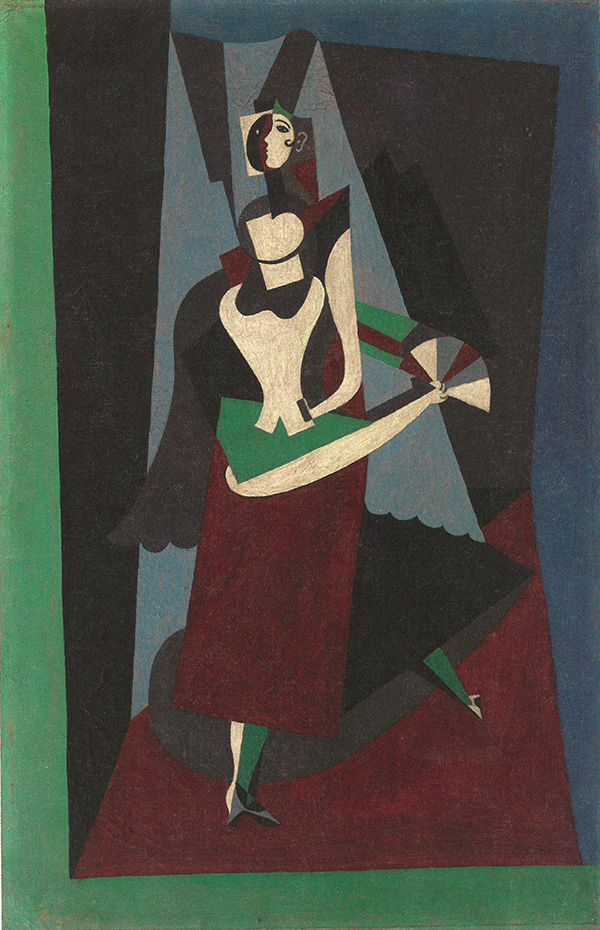Barcelona celebrates the 50th anniversary of Picasso's donation to the museum that bears his name.
Barcelona had a special place in Picasso's life and career. The artist moved to the city with his parents in 1896, when his father took a post as a professor at the School of Fine Arts. As a young adolescent of fifteen, Picasso soon discovered the endless possibilities opening up before him, while he also continued with his academic training. His feelings about his art education were contradictory, ranging from pleasure to boredom. Before long, the young Picasso broke away from conventions and began frequenting avant-garde venues, particularly the famous cabaret Els Quatre Gats, which Pere Romeu opened in 1897. There he made friends who shared his concerns and his urge to discover and create, such as Miquel Utrillo, Santiago Rusiñol, and Eugeni d’Ors. His very first exhibition featured portraits and caricatures of the cabaret's regulars, along with a canvas that became the subject of his Last Moments. Beginning in 1898, he shared his studios with other artist friends, particularly with Carles Casagemas.
For Picasso, Barcelona was the beginning of the adventure, his first steps towards the profession he had chosen, a springboard for reaching Paris and the artistic effervescence of the early 20th century. It was also the city to which he returned to restore his strength with his friends and family. He went back several times, first with Fernande, briefly with Eva in 1912, and then in 1917 with Olga when they were touring with Diaghilev's ballet Parade, performed first in Madrid and then in Barcelona. The show was panned by the critics, but that didn't matter: Picasso was happy to catch up with his circle of friends. It was also a fertile period in his Cubist production and painting of portraits, such as Olga Khokhlova in a Mantilla or that of Leonide Massine (the choreographer and dancer hired by Serge Diaghilev) in Harlequin. In 1919, after showing the painting at the Palais des Beaux-Arts exhibition, Picasso donated it to the Barcelona art museum. This Harlequin, painted in 1917 and intended to be shown at the same time as the ballet, was thus Picasso's first work to be exhibited in one of the city's museums. Picasso revisited Barcelona again in 1926, then in 1933, and in 1934, with Olga and their son Paulo, but only for short visits. Then came the war and the dictatorship.
The Museu Picasso, which opened in 1963 with Picasso's consent although Franco was still in power, began with the gift of a set of prints (over 500) belonging to the artist's friend, secretary, and confidant, the faithful Jaime Sabartés. At the time, the museum was called Colección Sabartés. Upon the poet's death in 1968, Picasso added fifty-eight canvases from his monumental series Las Meninas, produced over the course of four months in late 1957, along with another series of nine paintings, The Doves, also dated in 1957. Finally, in 1970, the artist completed the collection with a significant donation of works from his early years which had been held by his Catalan family –amounting to almost 1,000 pieces!
The museum, housed in the Berenguer de Aguilar palace, built in the 13th century in Catalan Gothic style on Carrer Montcada, in the city's Gothic Quarter, later expanded after the purchase of the Baró de Castellet, Meca, Mauri, and Finestres palaces to become the venue we know today. It now holds the world's leading collection of drawings, paintings, and sculptures by Picasso ranging from his early years through the Blue Period. In the 1980s, his wife Jacqueline also made two gifts of 40 ceramic pieces and 117 prints. Private donations would later complete the museum's holdings.
At the end of 1970, the museum presented the works by Picasso that had recently been donated by the artist, complementing the existing collection. Despite the wishes of the Barcelona City Council, the opening for the exhibition was a low-profile event, as Picasso was appalled by the Burgos trials that were underway at that time and what they revealed about the repression under Franco.
Illustration: Blanquita Suárez, 1917.
© Succession Picasso, 2021.





 Summary
Summary